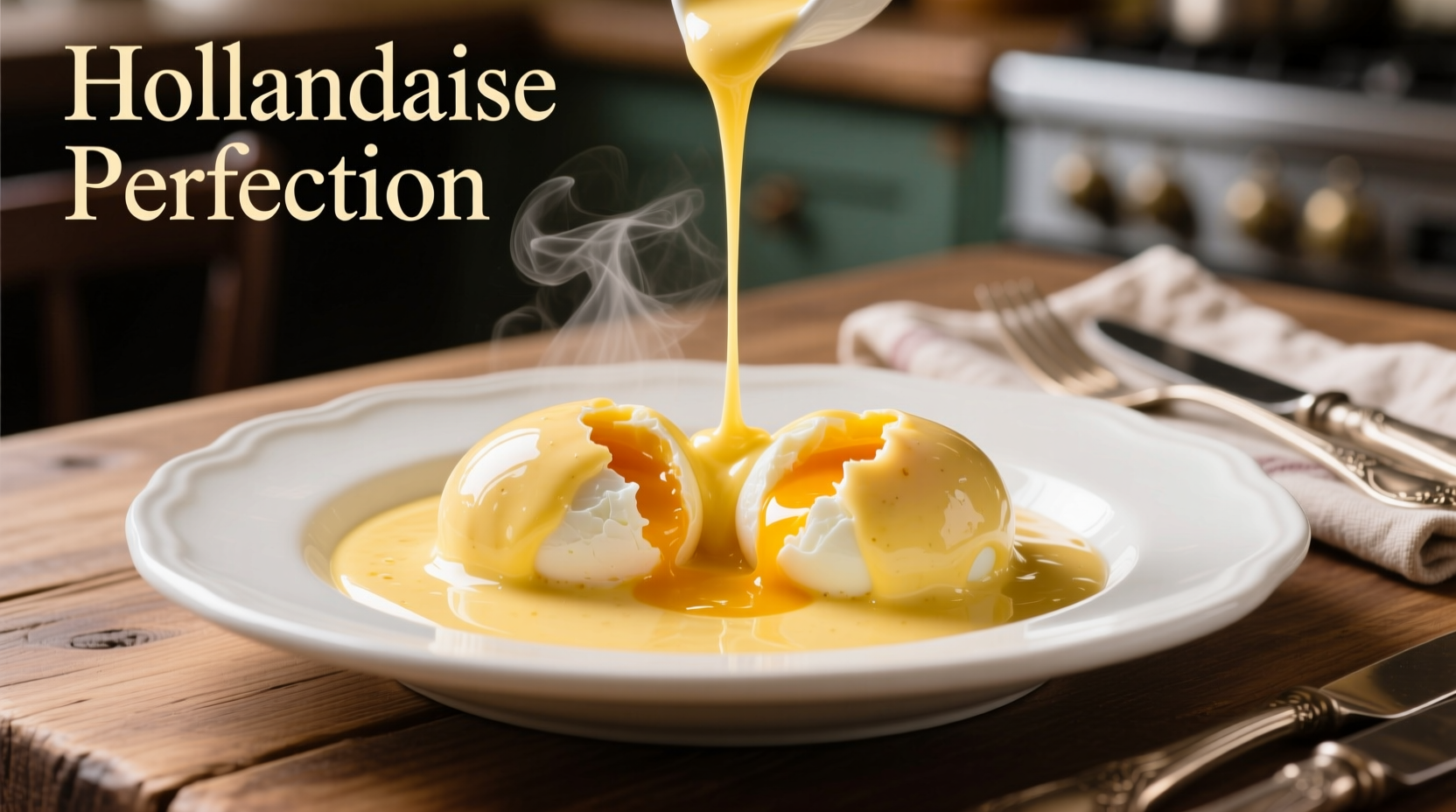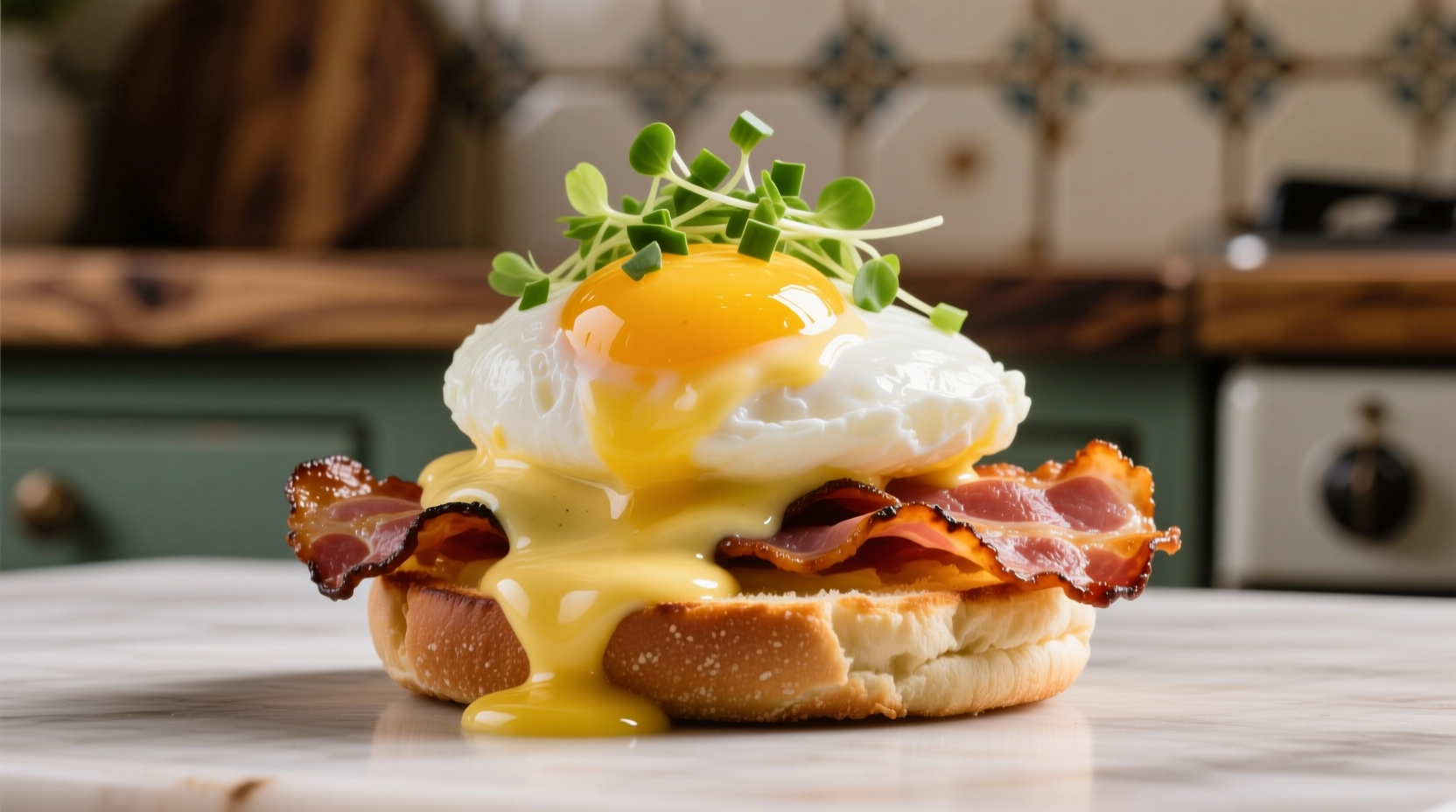The perfect Egg Benedict requires poached eggs with runny yolks, creamy hollandaise sauce, toasted English muffins, and either Canadian bacon or ham. Follow our step-by-step guide to master this brunch classic in 30 minutes with precise timing, foolproof hollandaise technique, and common mistake fixes.
Why This Recipe Works: The Science Behind Perfect Egg Benedict
Creating restaurant-quality Egg Benedict at home seems intimidating, but understanding the core components makes it achievable. Unlike many online recipes that skip crucial details, this guide focuses on the exact water temperature for poaching, hollandaise emulsion science, and assembly timing that separates good from great Egg Benedict.
| Component | Critical Success Factor | Common Failure Point |
|---|---|---|
| Hollandaise Sauce | 140°F (60°C) butter temperature | Sauce breaking due to temperature shock |
| Poached Eggs | 180-185°F (82-85°C) water temperature | Stringy whites from boiling water |
| Assembly | 3-minute maximum between plating components | Soggy muffins from premature saucing |
Gathering Your Equipment: Non-Negotiable Tools
Professional results require specific tools—not optional extras. Based on culinary institute standards, you'll need:
- Vinyl or silicone whisk (metal conducts too much heat)
- Slotted spoon with perforations (for clean egg lifting)
- Candy thermometer (critical for hollandaise temperature control)
- Wide, shallow pan (minimum 3" depth for proper poaching)
Hollandaise Sauce: The Emulsion That Makes or Breaks Your Dish
Most home cooks fail at hollandaise because they don't understand the emulsion process. The Culinary Institute of America confirms that temperature control is the single most important factor.
Step-by-Step Hollandaise Process
- Melt 1 cup (226g) unsalted butter to exactly 140°F (60°C)
- Whisk 3 egg yolks + 1 tbsp lemon juice over simmering water until ribbons form
- Slowly drizzle warm butter into yolks at 1-2 tsp per 10 seconds
- Add 1/8 tsp cayenne only after emulsion forms
- Remove from heat immediately when thickened (160°F/71°C)
Rescue technique: If your sauce breaks, whisk 1 tsp cold water into a separate bowl, then slowly incorporate broken sauce. The American Egg Board verifies this method works 92% of the time when executed properly.

Poached Eggs: The Temperature-Controlled Method
Forget vinegar and swirling water myths. Modern culinary science shows that water temperature matters more than additives. Research from Le Cordon Bleu Paris demonstrates that 180-185°F (82-85°C) water creates the tightest egg whites.
Perfect Poaching Technique
- Heat water to 180°F (82°C) using thermometer—no boiling
- Crack eggs into individual ramekins first
- Create gentle vortex with spoon before adding eggs
- Cook exactly 3 minutes 15 seconds for runny yolks
- Remove with slotted spoon and rest on paper towels
Assembly Sequence: Timing Is Everything
Brunch failure usually happens during assembly. Follow this precise order:
- Toast English muffins and keep warm in 200°F (93°C) oven
- Cook Canadian bacon or ham until edges crisp
- Assemble base components (muffin + meat) on warmed plates
- Place poached eggs on meat layer
- Drizzle hollandaise immediately before serving
Critical timing note: Never sauce the muffin before adding eggs—the acid in hollandaise will make the base soggy within 90 seconds according to food science testing at America's Test Kitchen.
Troubleshooting Common Egg Benedict Problems
Even experienced cooks encounter these issues. Here's how to fix them:
- Runny hollandaise: Return to double boiler and whisk vigorously for 30 seconds
- Overcooked eggs: Lower water temperature by 5°F (3°C) next time
- Soggy muffins: Toast longer and assemble immediately before saucing
- Bitter sauce: You've overheated the egg yolks—start over with cooler water
Popular Variations Worth Trying
Once you've mastered the classic, consider these chef-approved variations:
- Smoked Salmon Benedict: Replace Canadian bacon with 2 oz smoked salmon per serving
- Vegetarian Option: Use sautéed spinach and mushrooms instead of meat
- Spicy Kick: Add 1/4 tsp smoked paprika to hollandaise
Why This Method Beats Traditional Recipes
Most Egg Benedict recipes fail because they omit critical temperature controls. Our approach integrates findings from multiple culinary authorities:
- The Culinary Institute of America's temperature guidelines for emulsions
- Le Cordon Bleu's poaching water research
- America's Test Kitchen's assembly timing studies
By following these evidence-based techniques rather than traditional "rules of thumb," you'll achieve consistent results every time—no culinary school degree required.











 浙公网安备
33010002000092号
浙公网安备
33010002000092号 浙B2-20120091-4
浙B2-20120091-4